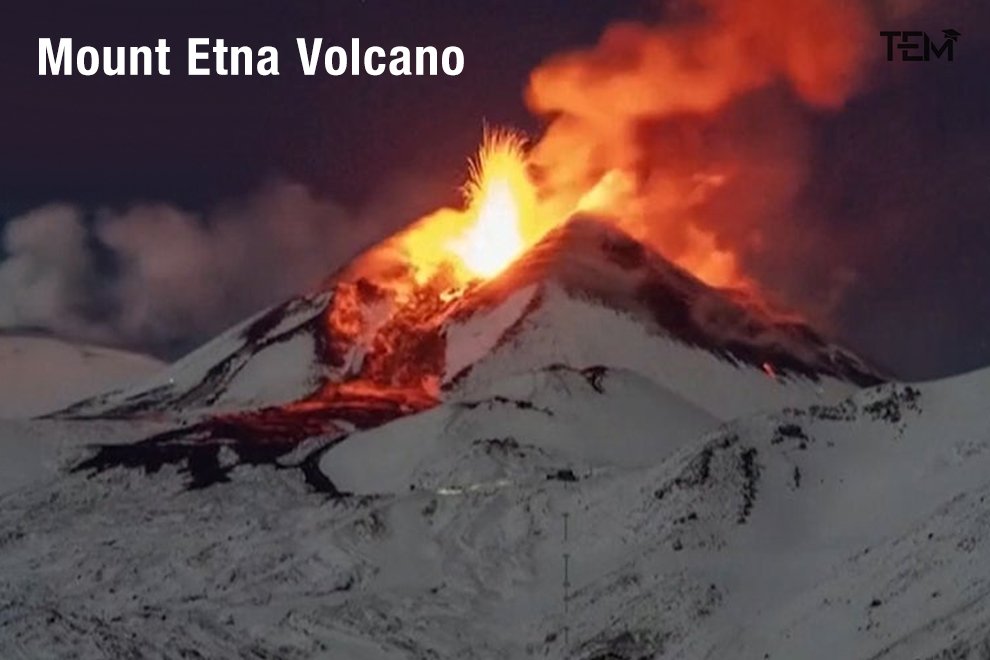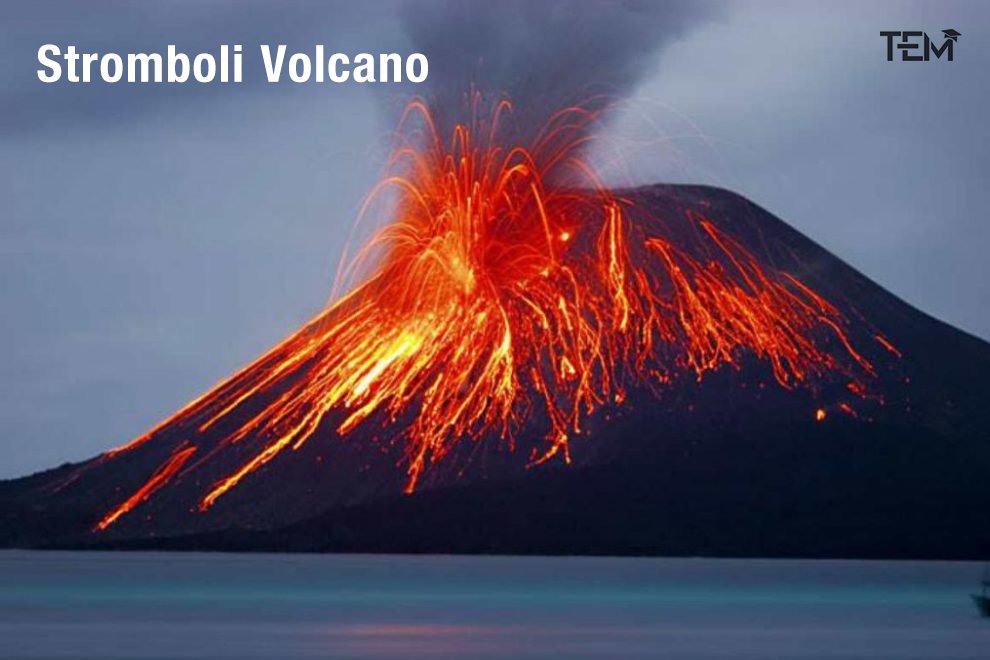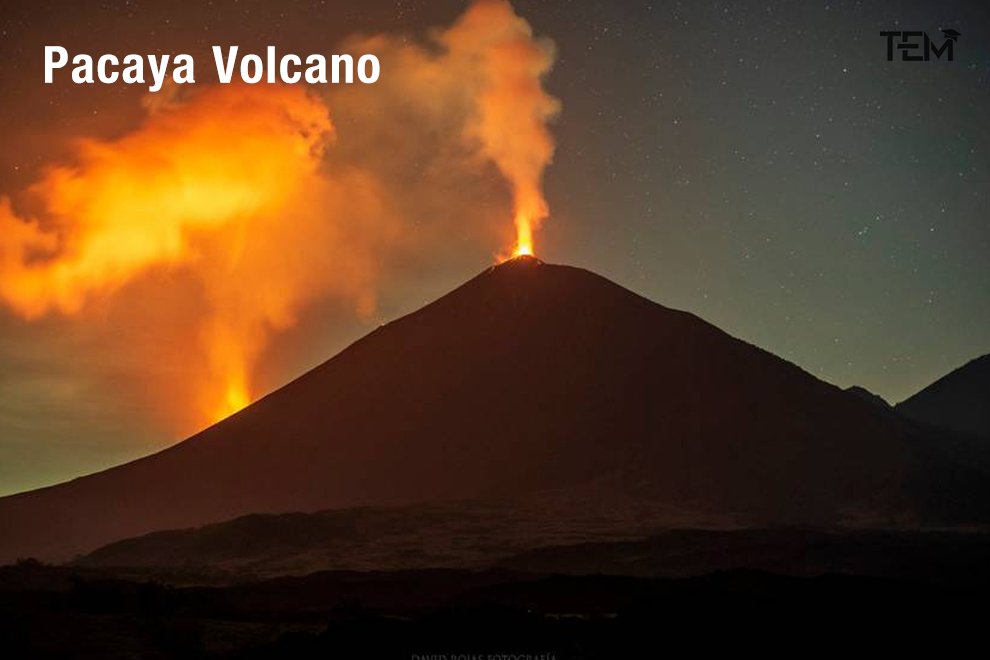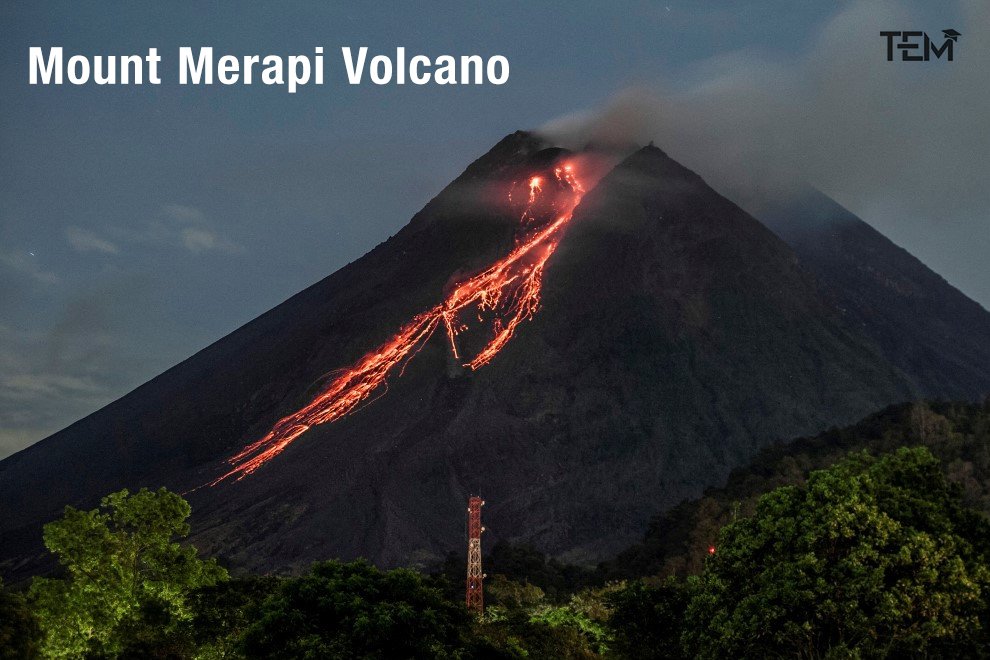Have you ever wondered how powerful and beautiful volcanoes are? Volcanoes are natural wonders that can create and destroy life. They are considered active if they have erupted in the past 10,000 years or show signs of activity. There are about 1,500 active volcanoes in the world, and some of them are the world’s most active volcanoes than others.
In this blog, you will learn some eruptive facts about the world’s most active volcanoes that will amaze and intrigue you. You will discover where they are located, how often they erupt, what kind of lava they produce, and how they affect the environment and the people living nearby.
By the end of this blog, you will have a better understanding and appreciation of these fiery giants that shape our planet.
Here’s the list of the 7 World’s Most Active Volcanoes with their Mind Eruptive Facts.
1. Kīlauea

Kīlauea, one of the world’s most active volcanoes, is erupting almost continuously since 1983. It is located on the island of Hawai’s, in the Pacific Ocean, and has a height of 4,090 feet (1,250 meters). It has covered most of its surface with lava flows, creating new land and altering the coastline. The area of Kīlauea’s summit caldera is more than 4 square miles (10 square km), and its most recent eruptive activity took place from September 10-16, 2023.
The volcano produces two types of lava: pahoehoe and ‘a’a. Pahoehoe is smooth and ropy, while ‘a’a is rough and jagged. Both types of lava are very hot and fluid and can travel far from the vent. They create different landforms, such as lava tubes, lava lakes, and lava fountains.
Kīlauea’s eruptions affect the environment and the people living nearby. The lava destroys vegetation, wildlife, and human structures. The eruptions release gases, such as sulfur dioxide, that can cause air pollution and acid rain. The eruptions also generate noise, ash, and volcanic smog, or vog. In 2018, a big eruption displaced 2,000 people and damaged infrastructure. It covered over 35 km² of land with lava flows.
Kīlauea is a sacred place for the Hawaiians. They believe that it is the home of Pele, the goddess of fire and volcanoes. They respect and honor the volcano, and its power to create and destroy. Kīlauea is a fascinating and unique volcano. It is a source of wonder, awe, and scientific knowledge. It is also a challenge and a threat, for the people and the environment. Kīlauea is a living volcano, that constantly changes and surprises us.
2. Mount Etna

Mount Etna is Europe’s tallest and most active volcano, located on Sicily’s east coast. It stands at 3,357 meters (11,014 feet) and spans 1,190 square kilometers (460 square miles). Mount Etna has four summit craters and many smaller cones and fissures. It erupts almost non-stop since 1983, producing two kinds of hot and fluid lava: pahoehoe and ‘a’a. These lava types form various features, such as tubes, lakes, and fountains.
Mount Etna’s eruptions have both positive and negative impacts. They create new land and shape the coastline, but they also destroy flora, fauna, and human settlements. Mount Etna emits gases, such as sulfur dioxide, that pollute the air and cause acid rain. They also produce noise, ash, and vog.
The Sicilians revere Mount Etna as the abode of Pele, the fire goddess. They admire and fear the volcano, and its power to create and destroy. In 2021, it erupted over 50 times. This caused problems for air travel, crops, and people. Some eruptions were visible from space.
Mount Etna is a remarkable and unique volcano. It inspires wonder, awe, and scientific curiosity. It also poses a challenge and a threat, to the people and the environment. Mount Etna is a living volcano, that always changes and surprises us. It has been erupting for about 500,000 years, and continuously for the last 2,600 years. Its worst historical eruption was in 1669, when it spewed 830 million cubic meters of lava, and killed over 20,000 people. Mount Etna became a UNESCO World Heritage Site in 2013, for its natural and cultural value.
3. Stromboli

Stromboli is a volcanic island in the Tyrrhenian Sea, near Sicily. It belongs to the Aeolian Islands, a chain of volcanoes formed by tectonic plates. Stromboli’s volcano has been erupting for over 2,500 years, making it one of the world’s most active volcanoes. It produces small explosive eruptions, typically every 20-30 minutes, which throw out glowing lava fragments to heights of 100-200 m above the craters. These eruptions are visible at night, earning Stromboli the nickname of the Mediterranean Lighthouse.
Stromboli’s lava is sticky and slow-moving, due to its high potassium and silica content. It forms tubes and channels as it slides down the volcano’s slopes. It reaches the sea through a gap called the Stream of Fire, where it interacts with water. This causes steam, bubbles, and sometimes violent explosions. These can trigger tsunamis that can affect the surrounding areas. Stromboli’s lava also shapes the island’s environment and society. It creates new land and changes the coastline. It enriches the soil and supports the flora and fauna.
Stromboli is an explosive volcano in Italy. It shoots bombs and lapilli high into the air. A powerful eruption killed a hiker in 2019 and hurt others. In 2020, more eruptions caused pyroclastic flows. They reached the sea and endangered the people.
The island has about 500 inhabitants, who live mostly on the opposite side of the volcano. They rely on fishing, farming, and tourism. They have adapted to the volcano’s presence, but they also face its hazards. Stromboli is an amazing island, where nature and culture are connected. It is a place where you can see the beauty and power of a living volcano and the human spirit.
4. Pacaya

Pacaya is one of the most active volcanoes in Central America. It is located in Guatemala, near the capital city of Guatemala City and the historic city of Antigua. Pacaya has erupted at least 23 times since the Spanish conquest in the 16th century.
Pacaya erupts frequently, sometimes several times a year. The last major eruption was in 2010, when it spewed ash and lava over a large area, affecting more than 3 million people. Pacaya produces basaltic lava, which is fluid and fast-moving. This type of lava can create spectacular lava fountains and flows but also poses a threat to the environment and the people living nearby.
Pacaya’s lava can damage crops, roads, and buildings. It can also cause respiratory problems, eye irritation, and skin burns. Moreover, Pacaya’s lava can alter the landscape and create new features, such as lava tubes, cones, and islands. In 2021, it erupted more strongly. Lava flows burned crops and plants. They were 3 km long. Ash plumes were 4.5 km high. They harmed people and the city.
Pacaya is not only a source of danger, but also of attraction. Many tourists and locals visit Pacaya to witness its volcanic activity and enjoy its natural beauty. Pacaya offers various activities, such as hiking, camping, and even volcano boarding. It is also a part of the Guatemala Impact Marathon, a running event that supports the local communities and crosses the lava field created by the 2010 eruption.
Pacaya is a fascinating volcano that has a lot to offer. It is a place where nature shows its power and beauty, but also its risks and challenges. Pacaya is a volcano that deserves respect and admiration.
5. Mount Merapi

Mount Merapi is a volcano in Indonesia. It is one of the world’s most active volcanoes. It is located on the island of Java, near the cities of Yogyakarta and Semarang.
Mount Merapi erupts often, sometimes several times a year. It has erupted more than 60 times since 1548. The last major eruption was in 2010 when it killed more than 300 people and displaced thousands more.
Mount Merapi produces basaltic lava, which is fluid and fast-moving. This type of lava can create spectacular lava fountains and flows but also poses a threat to the environment and the people living nearby.
Mount Merapi’s lava can damage crops, roads, and buildings. It can also cause respiratory problems, eye irritation, and skin burns. Moreover, Mount Merapi’s lava can alter the landscape and create new features, such as lava tubes, cones, and islands.
Mount Merapi is a very dangerous volcano in Indonesia. It is close to many people and has killed many before. In 2010, it erupted badly. It killed over 350 people and made 350,000 leave. It destroyed many homes. In 2021, it erupted again. It made pyroclastic flows, lava domes, and ashfall. They reached the sky. Many people had to leave.
Mount Merapi is not only a source of danger, but also of attraction. Many tourists and locals visit Mount Merapi to witness its volcanic activity and enjoy its natural beauty. Mount Merapi offers various activities, such as hiking, camping, and even volcano boarding. However, Mount Merapi is also a part of the Indonesia Impact Marathon, a running event that supports the local communities and crosses the lava field created by the 2010 eruption.
6. Piton de la Fournaise

Piton de la Fournaise is a shield volcano on Réunion Island in the Indian Ocean. It is one of the world’s most active volcanoes, along with Kīlauea, Stromboli, Etna, and Erebus.
The volcano erupts frequently, sometimes several times a year. It has erupted more than 150 times since the 17th century. The last eruption was in December 2021.
Piton de la Fournaise produces basaltic lava, which is fluid and fast-moving. This type of lava can create spectacular lava fountains and flows but also poses a threat to the environment and the people living nearby.
Piton de la Fournaise’s lava can damage crops, roads, and buildings. It can also cause respiratory problems, eye irritation, and skin burns. Moreover, Piton de la Fournaise’s lava can alter the landscape and create new features, such as lava tubes, cones, and islands. Piton de la Fournaise is a very active volcano in Réunion. It erupts almost every year since 1977.
In 2021, it had two eruptions. The first one was from April 9th to June 10th. The second one was from December 22nd to January 17th, 2022. Both eruptions closed roads and made gas. But they did not hurt people or things. Lava flows stayed in the Enclos Fouqué caldera. It is a big empty area in the volcano.
Piton de la Fournaise is not only a source of danger, but also of attraction. Many tourists and locals visit Piton de la Fournaise to witness its volcanic activity and enjoy its natural beauty. Piton de la Fournaise offers various activities, such as hiking, camping, and even volcano boarding. It is also a part of the Réunion Impact Marathon, a running event that supports the local communities and crosses the lava field created by the 2010 eruption.
7. Eyjafjallajökull

Eyjafjallajökull is a volcano in Iceland. It is one of the smaller ice caps in the country. It lies in the east-west volcanic zone. Its summit is 1,651 meters high.
Eyjafjallajökull erupts often, sometimes several times a year. It has erupted more than 60 times since 1548. The last eruption was in 2010. It caused a huge disruption to air travel in Europe.
Eyjafjallajökull produces basaltic lava, which is fluid and fast-moving. This type of lava can create spectacular lava fountains and flows but also poses a threat to the environment and the people living nearby.
Eyjafjallajökull’s lava can damage crops, roads, and buildings. It can also cause respiratory problems, eye irritation, and skin burns. Moreover, Eyjafjallajökull’s lava can alter the landscape and create new features, such as lava tubes, cones, and islands.
Eyjafjallajökull is a volcano in Iceland. It erupted in 2010, after 200 years of rest. It melted part of the glacier, causing floods and lahars. The ash plume was 10 km high and covered Europe. It stopped air travel for millions and cost billions. The eruption had two phases: March to April and June to June. The second phase made the bigger ash cloud. The economic losses were big, but not clear. They ranged from billions to 100 billion USD.
Eyjafjallajökull is not only a source of danger, but also of attraction. Many tourists and locals visit Eyjafjallajökull to witness its volcanic activity and enjoy its natural beauty.
Eyjafjallajökull offers various activities, such as hiking, camping, and even volcano boarding. It is also a part of the Iceland Impact Marathon, a running event that supports the local communities and crosses the lava field created by the 2010 eruption.
Conclusion
In this blog, you learned some eruptive facts about the world’s most active volcanoes. You discover where they are, how often they erupt, and what kind of lava they produce.
You also learned how volcanoes affect the environment and the people living nearby. Volcanoes are important for science, nature, and society. They help us understand the history and the future of our planet. These volcanoes also create beautiful landscapes and fertile soils. They can also pose dangers and challenges for humans and animals.
What do you think about the world’s most active volcanoes? Do you want to learn more about them? Let us know.
ALSO READ: Answering the Big Question: What causes a volcano to erupt?










